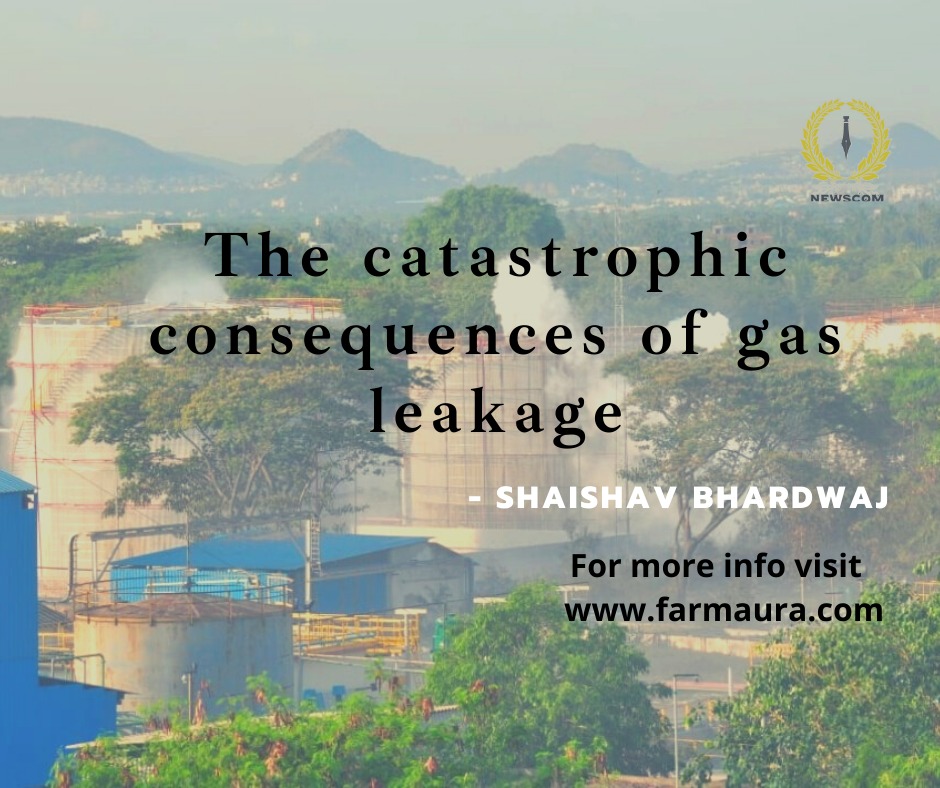The LG Polymers Plant gas leak on 7th May 2020 added to the continuing anguish of the coronavirus pandemic. The Plant on the outskirts of Visakhapatnam city in Andhra Pradesh is a part of the plastic resin and synthetic fiber manufacturing industry, a subsidiary of South Korean giants LG Chemicals Ltd. The plant uses styrene as raw material to manufacture its product. This styrene is highly combustible and when burnt releases a noxious vapor.
The third phase of nationwide coronavirus lockdown kicked in from 4th May 2020 with partial relaxations. The relaxations and restrictions in different states were different based on the level of extent of COVID-19 in that state. The Government coded all the districts of the states into red, green, and orange zones. As Visakhapatnam was prevailing in the orange zone, the plant was prepared to reopen on 7th May 2020. The workers started resuming the operations of the plant. The gas started leaking in the early hours between 2.30-3 am and quickly spread to the villages in the 5 km radius, leaving behind hundreds of residents in the surrounding area unconscious and sick as they slept. The origin of the leak is yet to be traced but according to the statement issued by LG Polymers “stagnation and changes in temperature could have caused auto polymerization of styrene leading to vaporization”.
Hours after the leak, many individuals and animals were seen lying unconscious on the road. A National Disaster Response Force was pressed into service and affected people were rushed to the King George hospital in the city. The incident took the lives of at least 13 people and over 500 people were reported sick.
About 22 domestic animals including cows, buffaloes were killed in the incident, while some others put under treatment. All the animal deaths were reported within a 1.5 km radius of the factory. It stirred many families who acquire their livelihood through the sale of dairy products. This has led to the deterioration of not only their physical health but also their economic health, from which it will be very tough for these families to recover.
On the same day, another poisonous gas leak incident took place in Chhattisgarh. 7 workers fell ill after a minor gas leak at Shakti paper mill near Tetla village in Raigarh. Leakage happened when the workers were cleaning the plant.
In 1984 at least 3,787 people died in a gas leak incident at the Union Carbide India Ltd. Pesticide plant in Bhopal popularly recognized as Bhopal gas tragedy also observed as the world’s worst industrial disaster. Since then there have been gas leak incidents like chlorine gas leak in an effluent treatment plant in Pune (2011), a poisonous gas leak from Bhilai Steel Plant in Chhattisgarh (2014), ammonia gas leak from a plant in Ratnagiri, Mumbai (2018), a chemical leak from a plant at Nira- Nimbut near Pune (2019), where many individuals lost their lives and many suffered diseases from which they haven’t healed even today. These incidents in recent years have again raised questions that whether the chemical industries in India are regulated properly or not.
All these gas leakage incidents have highlighted the question of the handling and maintenance of these factories and whether the people living in the vicinity are secure or not.
Shaishav Bhardwaj




